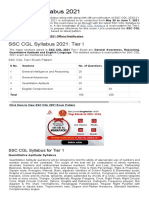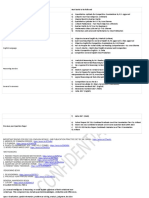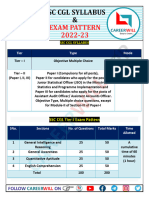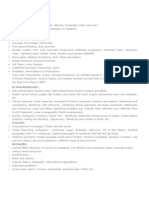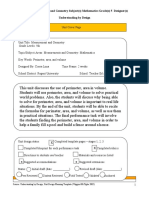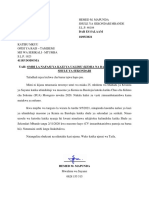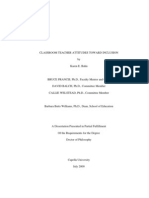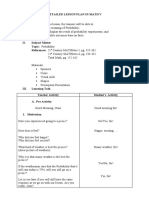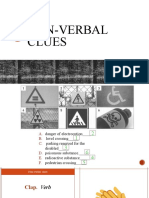0% found this document useful (0 votes)
192 views2 pagesSSC CGL Topicwise Syllabus Explained
The document outlines the SSC CGL 2025 syllabus, detailing the topics covered in Tier 1 across four sections: General Intelligence & Reasoning, General Awareness, Quantitative Aptitude, and English Comprehension. Each section includes specific areas of focus, such as analogy and coding-decoding in reasoning, current affairs and history in awareness, various mathematical concepts in aptitude, and comprehension and grammar in English. This comprehensive syllabus serves as a guide for candidates preparing for the SSC CGL examination.
Uploaded by
gyanpra1402Copyright
© © All Rights Reserved
We take content rights seriously. If you suspect this is your content, claim it here.
Available Formats
Download as PDF, TXT or read online on Scribd
0% found this document useful (0 votes)
192 views2 pagesSSC CGL Topicwise Syllabus Explained
The document outlines the SSC CGL 2025 syllabus, detailing the topics covered in Tier 1 across four sections: General Intelligence & Reasoning, General Awareness, Quantitative Aptitude, and English Comprehension. Each section includes specific areas of focus, such as analogy and coding-decoding in reasoning, current affairs and history in awareness, various mathematical concepts in aptitude, and comprehension and grammar in English. This comprehensive syllabus serves as a guide for candidates preparing for the SSC CGL examination.
Uploaded by
gyanpra1402Copyright
© © All Rights Reserved
We take content rights seriously. If you suspect this is your content, claim it here.
Available Formats
Download as PDF, TXT or read online on Scribd
/ 2






